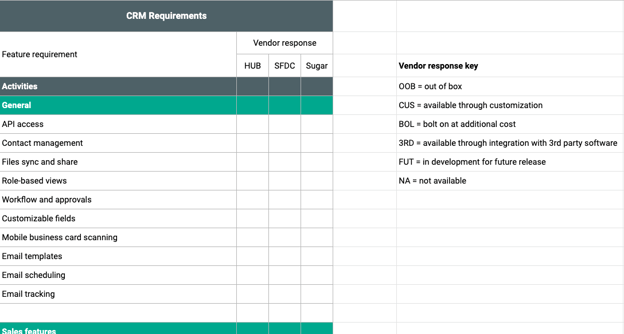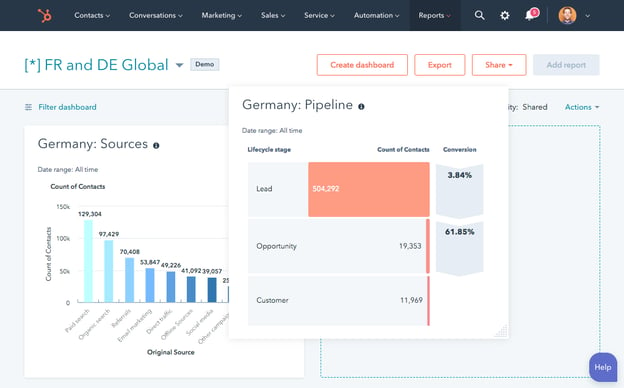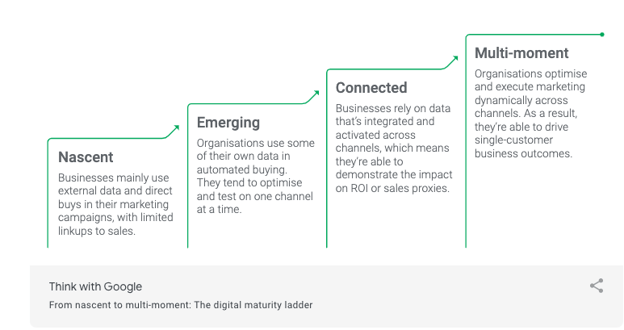Manufacturers tend to excel at digital transformation on the manufacturing floor. When it comes to finding areas to improve manufacturing processes and scaling their business, manufacturing often leads other industries. However, when it comes to the rest of the business: sales, marketing, and operations, the manufacturing industry lags behind others in enterprise digital strategy.

A recent Deloitte study found that just 25% of the manufacturing industry looks at digital transformation across their entire organization. Polywater, a Lake One client and leading manufacturer of quality chemical products for the electrical and communications industry, is one of them. As a manufacturing front-runner that began their digital transformation journey before COVID-19 changed, well, nearly everything in every industry, we asked them to share lessons and tips about their digital transformation. Here is their story.
Our Guests
Meryl Steinhauser | Product Manager | Polywater
Amy Helke | Inside Sales | Polywater
Challenges of outdated manufacturing sales and marketing technology
At the start of 2020, nobody could have predicted how the nature of face-to-face conversations and relationship-based selling would change, nor could they predict the pressing need that businesses would soon face to thrive digitally. Polywater’s digital transformation arrived at an opportune time.
The impetus to change was an outdated CRM. Polywater had a 20-year-old, on-premise CRM, which few people at the company used. As a result, it added little value to sales and marketing.
Polywater also wanted to drive stronger alignment between their marketing and sales teams to be more responsive, drive more engagement, and enable more productive sales
Finally, they were entering a new adjacent product market and needed to start reaching personas that previously weren’t on their marketing radar.
With an outdated system that wasn’t being used, teams that weren’t well-aligned, and new marketplace opportunities on the way, Polywater knew the only way to address their challenges and support their growth was to put upgraded sales and marketing systems in place. This led them to partner with Lake One and ultimately selecting HubSpot for both sales (CRM) and marketing (Marketing Automation).
Watch our entire chat with Polywater

Garnering alignment for digital transformation at your manufacturing firm
Whenever you have an organization that’s as established as Polywater both in installed technology and business process, the first step to a successful digital transformation is garnering alignment on the plan.
Both Steinhauser and Helke talked about the importance of getting upfront alignment from everyone involved. They acknowledge this step can be challenging. And it can take time. But they believe the more effort you put in at this stage, the easier it will be in the long-term.
Lake One held several fact-finding missions with the Polywater team, gathering user requirements across sales, marketing, and support to hone in on the very specific needs a sales and marketing technology solution would need to provide to support Polywater’s transformation. Requirements were documented, agreed upon, technology vetted, and selected.

Helke shares the importance of getting alignment on what each team needs and how they plan to use the CRM – especially when navigating complex data (more on that later).
They also describe how working with an external partner brought a useful and different perspective to their discussion. It helped them challenge how they’ve always done things and consider how to adjust going forward. And it kept them grounded in their ultimate goals (e.g., strengthening the connection between sales and marketing).
Appoint a central point of contact
Once you get started on the transformation, having a central point of contact is essential, says Steinhauser, because you need someone who will learn and understand the system’s inner workings and what’s happening behind the scenes.
In the beginning, Polywater was getting various requests, wants, and wishes from people within the organization. Having someone who could figure out the best, easiest, most user-friendly way to implement ideas and report back decisions was critical.
A central point of contact adds particular value during COVID-19 – whether in the same room or on a Zoom call. Helke, lovingly called Polywater’s digital pit boss, puts information in a central location, refers people to resources, walks them through how to complete essential tasks, and keeps people on track.
Ensuring a successful transformation
A digital transformation in any organization will take time. In a manufacturing organization, there will likely be things you uncover during your rollout that weren’t accounted for in even the best of requirements gathering. Careful consideration for training and a rollout plan can allow you to react to those changes as they come up and adopt them into your transformation plan.
Training and Rollout
Speaking of training, how do you take a group of different people from different departments with varying needs through training? You start with the basics and divide and conquer from there.
When it came to training the broader team of people using HubSpot, Helke outlines how they slowly waded in. They took small steps first, focusing primarily on the company’s immediate needs and looking only as far ahead as they needed to.
Their goal was to give people a sense of where the platform could take them but not inundate them with more than they needed to know at the time.

This approach helped users envision what the system was capable of, what it could do for the company, and how Polywater planned to use it. Over time, not overwhelming users led to adoption and enthusiasm with users generating ideas about other implementation opportunities.
Identifying Super Users
Another key component to a successful transformation is identifying superusers. A Superuser is someone who jumps in, learns the platform’s ins-and-outs, and is willing to make sure users across the organization have confidence using new tools. At Polywater, their Superuser formulates things in a way to make it easier for others to use – even those who are a little concerned about using the platform. Think of superusers users as people who can continue the training when your vendor or partner is no longer in the training phase.
A new tool can be intimidating, but having someone from the frontlines who embraces the change is beneficial.
Impact of digital transformation of Manufacturing Marketing and Sales
Better communication
Having gone through a digital transformation of sales and marketing gives the Polywater team the ability to track information, make sure they’re responsive to customers, and have what they need to follow-up regardless of where they’re working – essentially, communicating better among internal and external stakeholders.
Helke also describes how some of HubSpot’s capabilities really showed their value when COVID-19 hit during the chat.
Extensibility across multiple tools
Driving digital transformation in sales and marketing allows a manufacturer to get more out of their sales and marketing efforts by connecting modern tools together to garner business results. For example, after Polywater’s transformation, the sales team was able to integrate one to one sales videos, hosted through Vidyard, into their communications via HubSpot. The ability to record, send, and report on videos wasn’t even an option prior to their transformation.
Personalization drives connections amid a global pandemic
Helke touches on how their sales team uses the video platform to create personalized messages for their customers.
When it was clear travel would be restricted, the sales team (and more) wanted creative ways to connect with customers. Rather than being another email in a sea of emails, Polywater customers can see their salesperson – it’s the next best thing to having a one-to-one conversation.

Data drives action
A benefit of the Vidyard integration is the ability to see whether users viewed the video, stopped at a certain point, fast-forwarded to certain information – all significant indicators of their interests. This breadth of knowledge allows Polywater to tailor messages in the future. A variety of real-time data points now help the Polywater team make actionable decisions on all communication elements.
Simplify complex processes
An often-overlooked element of digital transformation is the opportunity to simplify historically complex processes. In particular, the introduction of a marketing automation tool allows manufacturers to use automation horsepower beyond just when to send emails.
Helke describes how Polywater historically manually coded contacts based on their market, company type, persona, location, and job function.
Polywater spent a good deal of consideration into how automation could help turn a manual, confusing process into something that worked behind the scenes to make meaning of Polywater’s data.
Steinhauser and Helke share how challenging this step was. How it took a considerable effort to get their contact codes to a point where everyone understood what they were, how they were used, and where they were collected. Looking back, the effort was worth it.
Ease of use drives data across the organization
A lot can change in technology over 20 years. Driving transformation, making complex processes automated, and getting alignment along the way can make adopting new technology less challenging.
At Polywater, the team’s effort to plan, rollout, adjust and refine digital transformation has led to positive adoption, leading to better data throughout the organization, enabling sales and marketing to be far more effective.
Looking ahead on the Transformation Roadmap
What does 2021 hold for Polywater? They’re starting to create marketing plans for each department – segmenting contacts and creating groups those departments want to contact and market to. While still working through what that looks like, the team is having fun imagining the possibilities.
Helke says now we get to see how all of the difficult backend work we did over the last year pays off, how it shifts us into cultivating our contacts and marketing to them with personalized messages.

KEY TAKEAWAYS
- Take your time; ask for and listen to your team’s suggestions to make sure you’re headed in the right direction
- Make tough decisions and do the hard work upfront
- Use data to inform your plans
- Gain alignment; don’t rush to the technology solution
- Get started! Digital transformation requires a plan, but you also need just to get started, or your plan will never come to fruition.
- Have a trusted guide and a roadmap for your digital transformation journey
Thanks to our experts for joining us and sharing their transformational journey, critical decisions, challenges, and early wins.

